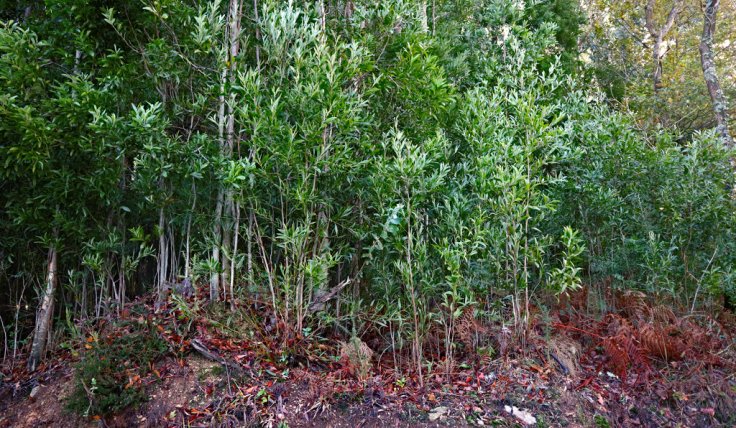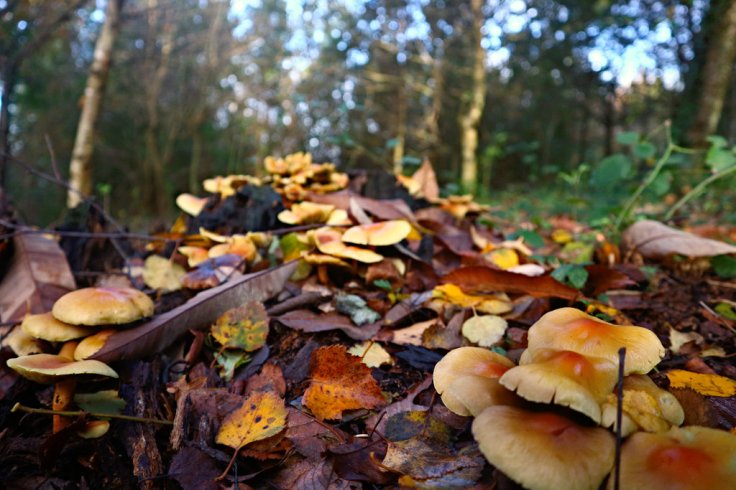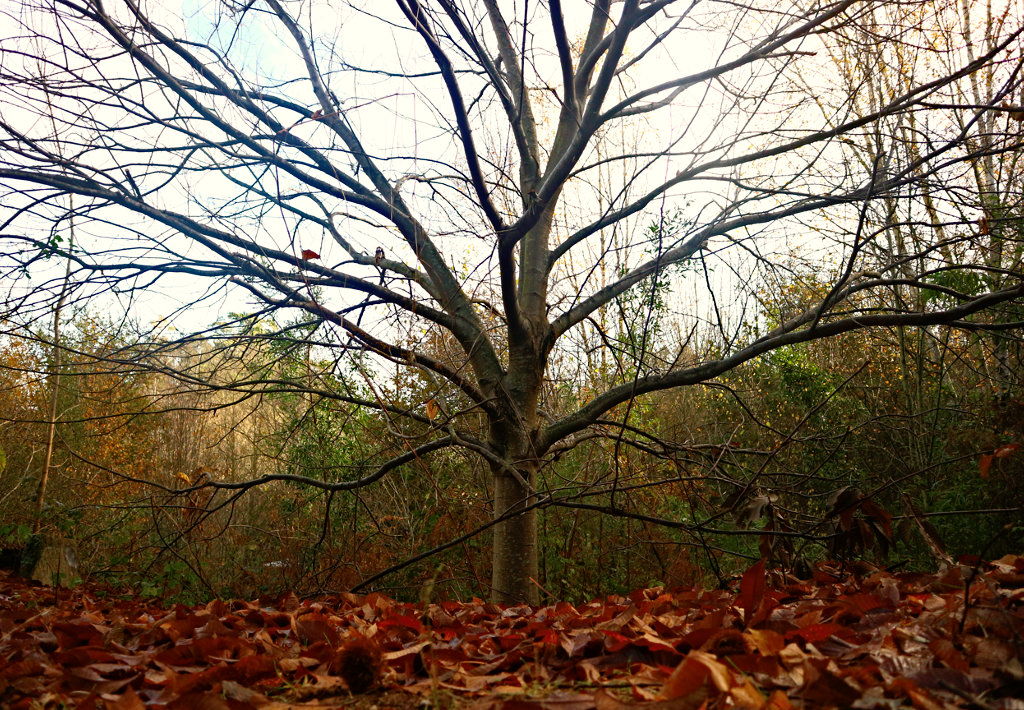In Galicia, October 2017, thousands of hectares of forest went up in blaze. Fires engulfed the hills of the provinces, even encroaching upon the industrial city of Vigo, in the region’s south-west. The scenes were cataclysmic; a smoke-covered city, rings of fire crawling toward the suburbs visible from afar, the smell of ash ingrained into clothes for a week after the event.

The region and country was taken by surprise and fingers were pointed at pyromaniacs. The regional president, Alberto Núñez Feijóo, condemned the acts as “incendiary terrorism”, saying that “Galicia did not burn on its own, someone burnt it”. It was easy to point to finger at the fire-bugs responsible for the immediate ignition, but the broader blame lies elsewhere.
The Eucalyptus invasion: feeding the pulp mills
Decades of eucalyptus and acacia plantations have converted much of Galicia into an Australian forest, simultaneously drying soils, pushing out native flora and fauna, and heightening fire risk. This combined with forest mismanagement, rural depopulation, and climate change meant that this disaster was, like most disasters, not at all natural, but man-made.

For Australian eyes, accustomed to the immense bushfires of home, the disaster was hardly a surprise. Upon arriving to Galicia the Australian visitor will immediately notice the presence of eucalyptus and acacia species, and will be left wondering why. The answer lies in profits and production.
For decades the Spanish state has encouraged the proliferation of these species as a way of supporting the timber and pulp industry here, and rural residents – often ageing and strained by demographic and economic changes which have made the care of land more difficult in modern times – have often welcomed the new income that eucalyptus and acacia harvesting represents, signing contracts which allow pulp-mill companies to extract timber from their land.
How to say ‘no’ to the lobbyists
These timber companies, such as the locally based Ence, have been slammed by citizens organisations for not only spreading invasive species throughout Galicia, but for simultaneously polluting the waterways and air of the sparkling Rías Baixas through cellulose processing. Thanks to this cellulose plant, the otherwise beautiful city of Pontevedra is now renowned across the country for its terrible odour caused by the factory’s environmental ‘externalisations’.
If the forest is healthy, it means you’re healthy. The forest that we have in Galicia is most of the time not healthy, and it’s a representation of where we live. We have to reverse that. We have to change that.
– Manuel Lopez
South of the border, the same problem has pushed the Portuguese government to enact a moratorium on eucalyptus plantations, shaken by the October fires which killed forty-five people. But in a country such as Spain where political and economic power are tied so closely together, few expect any serious change will come from the most recent bout of fires.

Stopping the march of the Eucalyptus
But there are some who have taken the initiative themselves, working to restore native Galician forests in their own backyard. Manuel López, of the parish of Teis, Vigo, is the secretary of the Teis Comunidade de Montes (translatable to something like a Community of Bushland or Hills), a community organisation which holds collective title over a small patch of woodland in the hills of Vigo.
Lives and Times: Writing on the World Around US
Manuel asks: “Why do we think that if we have fires every single year, year after year, the government is doing something efficiently? They don’t really care, it’s not on the agenda… Why? Eucalyptus. Eucalyptus is a huge, massive business. You get the profit in a short period of time, you don’t have to take care of basically anything – you plant eucalyptus, and eight to twelve years you come back, you chop it…”
 As secretary of the Teis Comunidade de Montes, Manuel has taken the lead in eliminating the Australian curse of eucalyptus and acacia from this pocket of Galicia. For some twenty years the community has worked to purge these species from these hills and replace them with the holy trinity of Atlantic species – oak, chestnut, and birch – together with cherry, willow, yew, holly, bay, alder, and elderberry trees.
As secretary of the Teis Comunidade de Montes, Manuel has taken the lead in eliminating the Australian curse of eucalyptus and acacia from this pocket of Galicia. For some twenty years the community has worked to purge these species from these hills and replace them with the holy trinity of Atlantic species – oak, chestnut, and birch – together with cherry, willow, yew, holly, bay, alder, and elderberry trees.
Teis is a real example which shows that it is possible to reverse decades of destructive forest policy, that another world can be grown
– Lives and Times
The fruits of the forest
The result is impressive, a native, healthy, and thriving example of an Atlantic forest which only two decades ago was suffocated by acacia and eucalyptus. Manuel reflects, saying “If the forest is healthy, it means you’re healthy. The forest that we have in Galicia is most of the time not healthy, and it’s a representation of where we live. We have to reverse that. We have to change that. How? Step by step. You have to have a thought, you have to have a vision, you have to have skills. Day by day, week by week, year by year, and one day you will wake up and you will say ‘wow!’ The results will come.”

The results can be seen in the return of the native jabalí, a wild boar, the proliferation of fungi, native birds and bees. Manuel takes great pleasure in seeing these results, coming to the forest regularly to walk through it, to think, to observe, to work. He tells me that “a lot of normal, regular guys think that nature is something to control, that beauty itself doesn’t have any value, that the richness, that the splendorous beauty of seeing native trees, native birds and bees doesn’t have any value at all.”
These trees have been here for millions of years, they know what to do, just leave them alone, give them space and they will be able to do it…
– Manuel Lopez
Another world can be grown
But Manuel sees now that things may be slowly moving, perhaps accelerated by the events of the past October when nature suddenly reminded urban dwellers of her presence and power. He tells me: “It seems to be that now there is a certain self-consciousness moving. People are saying we have to wake up… I’ve never seen that in the last 20 years. Something is moving toward a more respectful, more harmonious, more inclusive forest than this model of planting trees and making money from it.”

This self-consciousness can be seen in the volunteers on which this forest depends. The whole community has worked for decades trying to cut down eucalyptus, kill off acacias, and Manuel insists on the communal nature of this project, highlighting the dedication that this community has shown: “Commitment, determination: where is that? Where? You ask the people and they say I don’t know. Here you find that! We’ve made mistakes, but you know we’ve always had the will that we have to provide society a mirror, that this is possible, that it is positive and that it really enriches our lives in a positive way.” Teis is just that, a real example which shows us that it is possible to reverse decades of destructive forest policy, that another world can be grown. Touching the soil, Manuel tells me, you will feel that this is possible.
It takes time, a long time, and sweat, a lot of sweat, but in the end not only is it worth it but it is necessary if we are to secure a sustainable future. Manuel knows that he won’t be here in the future to see how the forest grows and grows, but he doesn’t mind, because it is his two little girls he is thinking about when he plants these trees. These trees, he says, “they have been here for millions of years, they know what to do, just leave them alone, give them space and they will be able to do it.”
Lives and Times…
Lives and Times is committed to producing quality writing on our changing environment. For more reports on Earth, Air, Wind, and Water, subscribe to Lives and Times by email:
Writing on the World Around Us…

